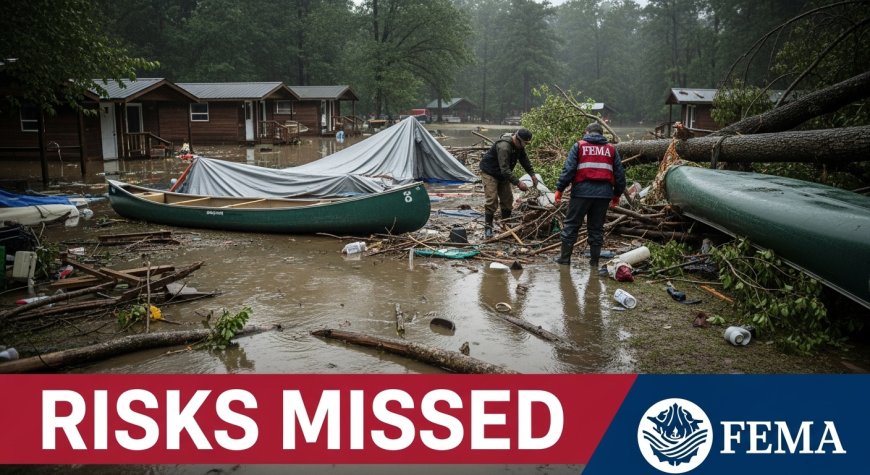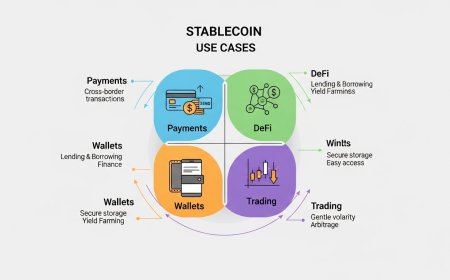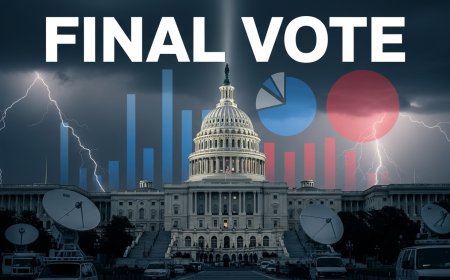BREAKING: FEMA Missed Major Flood Risks at Camp Mystic Where Dozens Died in Texas Floods
BREAKING: New analysis reveals FEMA missed major flood risks at Camp Mystic where dozens died in devastating Texas floods, raising accountability questions.

BREAKING: FEMA Missed Major Flood Risks at Camp Mystic Where Dozens Died in Texas Floods
Camp Mystic, TX | July 18, 2025 — A newly released independent analysis has revealed that the Federal Emergency Management Agency (FEMA) failed to properly assess and respond to severe flood risks at Camp Mystic, a remote summer retreat in the Texas Hill Country where 37 people were killed and dozens more injured in the devastating floods that swept through the region last month.
The report—commissioned by the National Institute for Climate Resilience (NICR) and conducted in collaboration with Texas A&M University—has sparked intense scrutiny of FEMA’s disaster preparedness protocols and risk mapping procedures. As pressure mounts on federal and state authorities to explain the deadly oversight, survivors and victims' families are demanding accountability and reform.
🌊 What Happened at Camp Mystic?
On the night of June 22, 2025, after days of heavy rainfall, the usually calm Guadalupe River overflowed its banks following the failure of an upstream floodgate. Within hours, a catastrophic surge engulfed Camp Mystic, a well-known Christian youth camp that had hosted over 200 campers and staff during its peak summer session.
Rescue workers described chaotic conditions as buildings were swept away, communication systems failed, and evacuations were delayed by poor access roads and washed-out bridges. Despite the efforts of local firefighters, search-and-rescue teams, and the Texas National Guard, 37 lives were lost, including 15 minors aged 9 to 16.
Initial reports blamed the unpredictability of the storm, but this new analysis points to something far more damning: federal negligence.
🧾 FEMA's Critical Oversight: A Preventable Tragedy
According to the NICR study, FEMA's flood risk classification for Camp Mystic had not been updated since 2014. Even worse, data used in FEMA’s flood zone designations excluded the impact of upstream water releases and dam overflow scenarios, despite the region experiencing three near-miss events in the last decade.
Key Findings from the Report:
-
FEMA maps classified Camp Mystic as “Zone X”, meaning minimal flood risk—despite local hydrologists warning of vulnerability since 2019.
-
The Guadalupe River watershed model used by FEMA was outdated, relying on precipitation patterns that no longer reflect the current climate volatility.
-
FEMA ignored two independent recommendations (in 2020 and 2022) to reclassify Camp Mystic as a moderate-to-high risk floodplain.
-
No emergency evacuation protocols were ever established or shared with camp management by FEMA or state emergency officials.
“This tragedy was not only predictable—it was preventable,” said Dr. Nina Delgado, lead author of the NICR report. “It exposes a systemic failure to account for the new climate reality we are facing.”
🗣️ Voices from the Ground: Survivors and Families Speak Out
Grief Turns to Anger
For many survivors, the report confirms what they already feared: that the disaster wasn’t just an act of nature, but a failure of government responsibility.
Emily Torres, 16, who survived by clinging to a tree for over five hours, broke down during a town hall in nearby Kerrville.
“They told us the camp was safe. My best friend drowned in the cabin next to mine,” she said through tears. “They lied. They let us die.”
George Ellis, whose daughter Madeline (12) was among the victims, demanded congressional action.
“FEMA said the flood couldn’t happen. They said we didn’t need extra insurance. Now our kids are gone, and all they give us are condolences and excuses,” Ellis told reporters outside the U.S. District Courthouse in Austin.
📜 FEMA’s Response: “An Evolving Threat”
In a brief statement, FEMA acknowledged the NICR report and said it is conducting a “full-scale internal review” of its risk assessment tools and floodplain mapping practices.
“We recognize that climate variability has introduced new challenges in risk identification. FEMA is committed to updating protocols and partnering with state and local agencies to ensure safer outcomes,” the statement read.
However, Administrator Denise Langford has not responded to requests for interviews, and no FEMA official has visited Camp Mystic since the disaster, further fueling public frustration.
Understaffing and Budget Constraints?
Multiple internal FEMA sources, speaking anonymously, point to chronic understaffing, outdated GIS systems, and political gridlock as key reasons why map revisions lag by years.
“We’re working with 15-year-old flood models in some areas,” said one senior FEMA analyst. “We’ve warned D.C. for years, but budget cuts and bureaucracy tie our hands.”
🏛️ Congressional Inquiry and State Investigations Underway
In response to the report’s findings, the House Committee on Homeland Security has scheduled an emergency oversight hearing next Wednesday. Rep. Laura Holcomb (D-TX), who represents the affected district, has called for a federal audit of all FEMA flood mapping nationwide.
“This is bigger than Mystic. There are hundreds of schools, nursing homes, and neighborhoods across America relying on faulty data. The public deserves protection—not paper promises.”
In Texas, Attorney General Will Howard has opened a state-level investigation into liability claims, including whether FEMA or state emergency agencies could face civil or criminal accountability for negligence.
🔎 Climate Change, Infrastructure, and Mapping Failures
Experts say the tragedy at Camp Mystic reflects a broader national crisis: FEMA’s failure to keep pace with the realities of extreme weather, driven by accelerating climate change and outdated infrastructure.
A 2024 study by the Union of Concerned Scientists warned that over 5 million Americans live in areas FEMA classifies as low risk that are, in fact, highly vulnerable due to changing rainfall patterns, sea-level rise, or dam failures.
“We’re living in 2025 with flood maps built for 2005,” said Dr. Harold Meeks, a former FEMA regional coordinator. “Until we modernize the system, tragedies like Mystic will keep happening.”
💡 The Bigger Picture: Emergency Management at a Crossroads
The Camp Mystic flood has renewed calls for a complete overhaul of America’s disaster preparedness strategy. Critics argue FEMA’s risk modeling is not only outdated, but also disproportionately disadvantages rural and low-income communities, where local governments lack resources to supplement federal assessments.
Proposed Reforms Now Gaining Traction:
-
Real-time flood modeling using AI and satellite data
-
Mandatory biannual risk reassessments
-
Public access to interactive flood dashboards
-
Federally funded community evacuation planning and drills
-
Greater inter-agency coordination between FEMA, NOAA, and state hydrology teams
🧠 Expert Insight: Accountability in the Era of Climate Disasters
The Mystic tragedy may prove to be a tipping point for how the U.S. approaches flood planning and emergency readiness. Dr. Nina Delgado, whose team produced the critical report, warned that this is not an isolated case.
“Every storm now has the potential to be historic. FEMA must stop reacting and start anticipating. The era of climate denial in disaster planning is over—or should be.”
🕯️ Remembering the Victims
A candlelight vigil held Wednesday night drew over 1,000 mourners to Camp Mystic. The names of the 37 deceased were read aloud by family members and community leaders, followed by a moment of silence and a river-side flower release ceremony.
As music played softly under a darkening sky, many in attendance vowed to turn grief into action.
What's Your Reaction?
 Like
0
Like
0
 Dislike
0
Dislike
0
 Love
0
Love
0
 Funny
0
Funny
0
 Angry
0
Angry
0
 Sad
0
Sad
0
 Wow
0
Wow
0































































